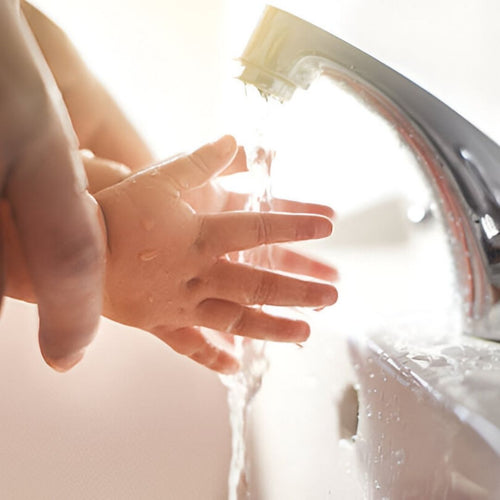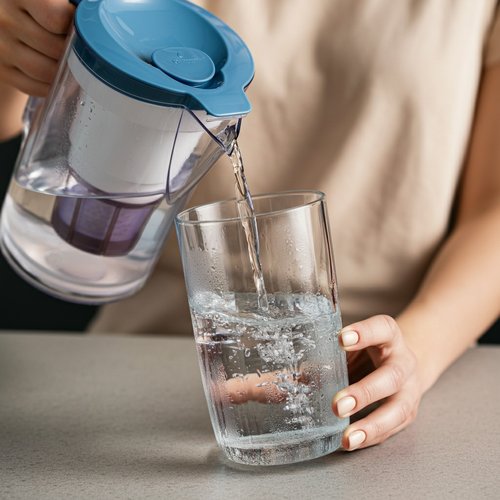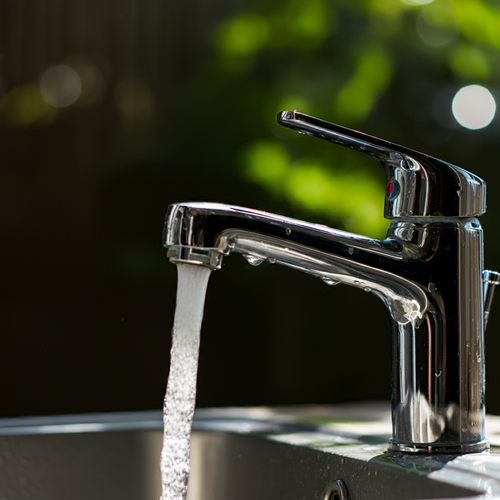Understanding Iron Filters
Benefits of Iron Filters
So, you're sick of that funky taste in your tap water, huh? Iron filters are your pals when it comes to zapping that pesky iron out of your well water. Here’s a quick rundown on why they rock:
- Better Tasting Water: Nobody wants to sip on water that tastes like a rusty nail. Iron filters pull out that sulfur and rust, making your water taste like actual water again.
- Keeps Your Stuff Running Smoothly: Appliances and pipes don't mix well with gunk. Filters remove sediments, like flushing out the bad vibes so your fixtures and gadgets can chill without choking on iron.
- No Weird Chemicals: Pure water doesn't need a bunch of add-ons. With iron filters, you’re getting clean water minus the cocktail of chemicals, so you can fill your cup with confidence.
Importance of Iron Filtration
Iron filtration isn’t just about nicer water. It's about keeping you and your home in the safe zone:
- EPA Guidelines for Iron: The EPA says you want no more than 0.3 mg/l of iron in your water, but well water could be packing up to 10 mg/l. That could mess with your health if you're not careful.
- Watch Out for the Little Ones: Kids and moms-to-be, listen up. Too much iron in your water can be a bigger deal for you, so keeping it in check is a top priority.
Getting an iron filter is like investing in a really good pair of shoes. Once you’ve got them, you're not just stepping out looking good—you're walking through life, protecting your health future and home appliances from sneaky threats.
Health Considerations
Impact of Iron in Drinking Water
Dealing with well water packed with iron can be a real head-scratcher. Even tiny traces of iron can make water look rusty and give it a metallic whiff. Plus, it messes with the taste, which can turn a simple drink or cooked meal into a bit of a bummer.
Imagine making tea, and instead of the soothing brown, you end up with some black gunk because iron decided to tango with your tannins. Talk about a breakfast surprise!
Iron levels get checked in parts per million (PPM). Now, if you ask the smart folks at the EPA, they'd say aim for zero iron in your water.
Anything over 0.3 PPM might leave your whites looking like you've gone a round with a mud wrestler, and your utensils might start developing, let’s say, a rustic charm.
| Iron Concentration (PPM) | Impact |
|---|---|
| 0 PPM | No staining, water tastes right and looks clear |
| 0.3 PPM | Light staining, subtle changes in taste and color |
| 1-3 PPM | Noticeable changes in your drink’s flair, staining everywhere |
| 3-10 PPM | Heavy staining, metallic water doesn’t taste yum |
| >10 PPM | Major league stains, water that’s practically swimming in sludge |
Health Risks Associated with High Iron Levels
Too much iron in the water isn't just a mess for your clothes and taste buds; it can mess with your health too. Although iron's one of those nutrients we need, gulping down too much of it isn't good, especially for expectant moms and kids. They can end up with tummy troubles or worse.
That’s where iron water filters come in handy. They’re like the bouncers of the water club, keeping the iron out and leaving your tap spurting pure, chemical-free goodness. It’s not just about keeping our water pretty but protecting everyone’s health, especially those in the fam who need it most.
Picking the Perfect Iron Filter
Getting the right iron filter for your home is key if your well water's got a bit too much iron for your liking. So, let's chat about the various types of iron filters out there, and what you ought to think about before splashing the cash.
Types of Iron Filters
There's plenty of choices when it comes to iron filters, each tackling the rust problem in their own way:
-
Oxidizing Filters: These bad boys use something called a "media bed" with an oxidizing element like manganese dioxide. They're like bouncers at a club, grabbing soluble iron and booting it, leaving your water clean.
-
Birm Filters: This one's all about oxidizing the iron before sending it on its way. If your water's got a pH of 6.8 or up, you're smooth sailing. But don't go there if you've got stinky sulfur or iron-loving bacteria in your water.
-
Katalox Light Systems: The heavyweights of iron filters—taking out up to 30 ppm of iron, and giving sulfur and manganese a one-way ticket out.
-
Katolox Filtration Systems: These systems are like the triple threat, handling iron, manganese, and hydrogen sulfide all in one go. They're real pros for well water with iron overload.
Factors to Mull Over Before Choosing
When hunting for the best iron filter, keep these points in your back pocket:
-
Iron Amount: You'll need something that can handle a fair bit of iron—around 7-10 ppm or even 30 ppm with something like Katalox Light.
-
Kind of Iron: Is it ferrous (clear-water) or ferric (red-water)? Different strokes for different folks when it comes to filtering types.
-
Other Nasty Bits: If you've got manganese or hydrogen sulfide, then remember, systems like Katalox Light can ditch those too.
-
Water pH: Birm filters need a happy pH (6.8 or more) to do their job.
-
Upkeep & Lifespan: Think about how much love (aka maintenance) your filter will need. Media like Katalox Light is known to stick around for a while.
-
Price Tag: These filters don't come cheap—but think long-term. Make sure the filter pays for itself with durability and low upkeep.
Handy-Dandy Comparison Table
Deciding which iron filter suits you? Here’s a quick guide to help:
| Filter Type | Iron Handling | Extra Stuff Gone | Best Situation | Care Level |
|---|---|---|---|---|
| Oxidizing Filters | Up to 10 ppm | None | General iron beating | A bit of elbow grease |
| Birm Filters | Up to 15 ppm | None | Needs pH > 6.8 | Easy peasy |
| Katalox Light | Up to 30 ppm | Sulfur, Manganese | High gunk counts | Low (it's a solid performer) |
| Katolox Systems | 5 ppm+ | Iron, Manganese, Hydrogen Sulfide | Great for lots of iron and trash | Some work needed |
In the end, picking the right iron filter is all about knowing what your water's up to and finding the filter that tackles it best. With a bit of smarts, you'll have clean, iron-free water gushing through your home in no time.
Installation and Maintenance
Getting an iron water filter up and running for the whole house isn't rocket science. With some simple steps, we can get these bad boys running and keep them purring smoothly.
Proper Installation of Iron Filters
Alright, first things first, putting this filter in the right spot is a game-changer. Make sure it’s easy to get to for later cleaning but also close to where the water strolls into our casa.
- Placement: Make the iron filter king of the water pipe so it covers the whole place.
- Tools Needed: Grab a wrench set, pipe cutter, Teflon tape, and maybe some PVC goo if you're on PVC duty.
- Steps:
- Hit the brakes on the main water supply.
- Snip into the main water line and slap on shut-off valves on either side like bookends. They help control water when we need to tweak things.
- Hook up the filter to the pipe, using Teflon tape to block any sneaky leaks.
- Switch the water back on and do a quick leak check before nailing it in place.
Some filters flex an oxidizing agent like they’re water softeners, making setup a breeze.
Routine Maintenance for Optimal Performance
Giving our iron filter some TLC is key. A bit of maintenance love makes sure it stays happy and lasts longer.
- Cleaning the Media Bed:
- Backwashing: Just a fancy way to say we're flushing it backwards to kick out trapped iron stuff.
- Frequency: Shoot for at least once a week or go with what the big shots (a.k.a. the manufacturer) suggest.
- Regenerating Filters:
- These guys sometimes need a recharge. It's like giving them a salt bath or another rejuvenating soak.
- Frequency: Again, follow the manufacturer’s crystal ball—usually every few months.
- Monitoring Systems:
- Keep an eye on the filter's mojo. If the water starts to taste funny, it might be time for some maintenance action or to peek into any hiccups the system's having.
Funny thing? Modern filters pretty much take care of themselves, easing up on us busy folks. Note that not all filters sing the same regeneration song and might need a bit of O2 in the mix.
Our mission is crystal-clear water both in taste and sight, free of icky iron bits, making life at home just a bit easier. Regular check-ins and tune-ups are the tricks to keep the magic alive.
| Maintenance Task | Frequency |
|---|---|
| Backwashing | Weekly |
| Regeneration | Every Few Months |
| Performance Monitoring | Regularly |
By sticking to these simple moves, folks with well water can wave goodbye to rusty water woes and those less-than-lovely sulfur whiffs with all the confidence.


















![Aldex Premium 10% Cross Link Resin for Water Softener [High Capacity]-SoftPro® Water Systems](http://www.softprowatersystems.com/cdn/shop/files/Aldex_10_Cross_Link_Resin_Premium_High_Capacity_for_Water_Softener_600x.jpg?v=1735853599)
























